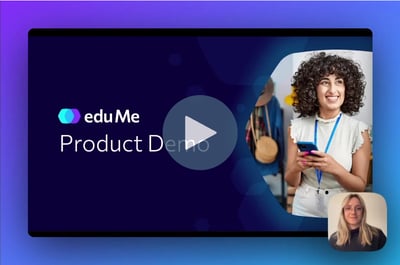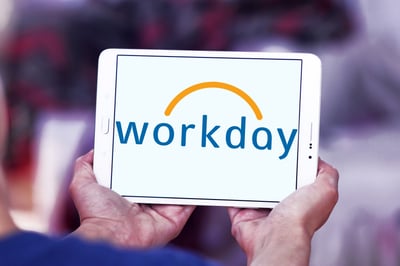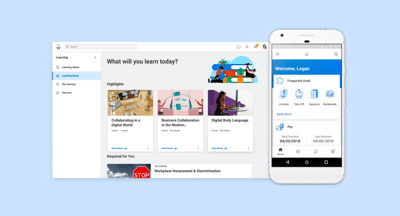Problems facing the hospitality industry
When it comes to getting new staff up to speed with your processes and products, some of the following may resonate with you if you operate in the hospitality space:
-
High staff turnover means arranging constant training sessions. These can be costly, their results are hard to quantify and material and/or quality of training is not standardized
-
People are hard to ‘reach’ - they are spread across numerous locations, work different hours and don’t have easy access to e.g. email whilst working
-
In-person training has become even harder to execute post Covid-19
-
Few new hires are superstars from the get go - great quality service takes months of experience to perfect
-
You release new products frequently and teams require upskilling in the ins and outs of these to be able to better sell them to your customers
-
Effectively instilling your ethos and values into teams is easier said than done
Related: Download our Ultimate Guide to Reboarding your Workforce post-Covid [Free eBook]
Why onboarding training is important in the hospitality industry
All training, introductory or otherwise, is important - companies rated highly on training see 53% lower churn. However, the key to reversing high premature turnover lies in onboarding specifically.
20% of employees leave within their first 45 days - with each new hire there exists a short window of time for you to prove that they have made the right decision.
In one study, hotel employees rated “introductory training” as one of the most important characteristics of their employment, highlighting the difference a good first impression can make.
And making a good first impression is essential given the industry’s notoriety for staff retention issues. The average employee turnover rate across all industries is 25%, hospitality’s is triple this number at 75%, meaning that 3 out of every 4 employees hired will leave.
Employee turnover rate in the hospitality industry is grossly higher than what is considered healthy among all industries
A prospect that’s far from ideal, given the associated costs to a company of high attrition - replacing a churned employee can cost anything up to $18,000 (a figure comprising recruitment, lost productivity and more).
Conversely, onboarding training has continually been shown to be effective in reducing departures - organizations with strong onboarding training see 82% higher employee retention.
What should I include in my onboarding training?
Now we’ve covered why onboarding is so important, here are 4 tips to improve yours.
Follow the following to better engage - so as to retain - your employees, and to get new hires operational and providing a 5-star service to customers as quickly as possible.
1. Give new starters an excellent grounding in your company and its story
As human beings, we seek a “why” to give meaning to our actions. Employees need to derive a sense of purpose from what they do in order to feel fulfilled - 70% of employees say their sense of purpose is defined by their work, but 62% want to feel a greater sense of purpose in their work.
Purpose is tied to retention - feeling purposeful at work leads to greater resilience, mental and physical health, as well as greater loyalty. How do you go about instilling purpose? Start by answering the following questions, during onboarding:
-
When did the business start and what was the vision?
-
What do you stand for, and why?
-
How are you different from competitors?
-
Who are your owners or managers, and what are their stories?
-
What are the growth/success plans, and how do you want to achieve them?
This is a great place to add a personal touch. Replicate a face-to-face connection with short welcome videos from the General Manager and Head Chef, for example.
Employees will feel proud to be part of the company and have purpose in what they do - increasing productivity.
Employees expect their jobs to bring a significant sense of purpose to their lives. Employers need to help meet this need, or be prepared to lose talent to companies that will.
2. Convey the values and culture of your company
It is really important to create excitement and a sense of belonging. Everyone of us has a set of values that we need to be understood and rewarded to feel happy at work. By sharing the values of your business you can connect with individuals in a manner beyond physical rewards.
A great way to achieve this is through short videos of employees talking about their experiences:
-
What do they like about working at your company?
-
What does a typical day look like?
-
What is different from other places they’ve worked at?
It’s reassuring for new starters, certainly those without decades of job experience to hear from their colleagues and peers. A survey conducted of 5,000 employees across 65 countries found that employees prefer to gain knowledge from colleagues and share insight among teams. 90% found this form of peer-to-peer learning, or knowledge exchange, “very essential”.
When employees think management sincerely cares for their [employee's] well-being, they experience advanced levels of job fulfillment and display more dedication to the organization.
Experts say that for staff with irregular working patterns in particular, as in hospitality, feeling ‘valued’ is critical to retaining them. Firing off single-question, ‘pulse surveys’ is a great way to empower people with a voice, and collect feedback in order to improve your training material.
-
Related: What is a ‘Pulse Survey’?
3. Provide the basics for a new employee to hit the ground running
We all know it can feel a bit overwhelming at the start of a new job. So keep this technical part short and focused on what people really need to know at the beginning of their journey.
We’ve mentioned videos a few times. According to the Social Science Network nearly 80% or our learning takes place visually. Videos deliver information in an engaging and memorable way. They also aren’t difficult to make. Grab a phone - and press record.
You will no doubt have piles of information that you need to share, but remember, less is more. Focus purely on what’s important and what anyone who’s starting needs to know.
Having training based on mobile also means you can quickly update and share new training. It also means you can distribute training only to those who need it. By giving your workforce training they need, whether new or existing staff, they can see that they are achieving something - rather than just performing routine tasks.
Shorter chunks of information are easier to digest and have higher retention rates.
4. Little and often for continuous improvement
Whatever the role, training and personal development should be a priority. It lowers the costs associated with poor service and retention of staff. And if delivered if the right way, it drastically lowers traditional training costs.
To maintain your level of service, keep team members up to date with regular training. It only needs to be short - but provides an ongoing reminder of how to succeed. And if your staff are succeeding, so are you.
Benefit: A motivated workforce with exceptional product and service knowledge.
In summary:
-
Keep your onboarding training as concise and focused as possible
-
Make sure it:
- Provides a good introduction to your company
- Makes people feel motivated and excited
- Delivers only the necessary technical and product knowledge
-
Follow up regularly with bite-sized courses allowing employees to refresh - and build on - their knowledge and skills.
How do I reach frontline staff with onboarding training?
Companies that want to attract and retain the "largest generation in history" must understand what each generation values, not just generation Y, to properly attract and retain top talent.
Employees have a new set of expectations shaped by technology, in particular, the rise and proliferation of smartphone technology.
They now expect their experience as consumers to match their experiences on-the-job. I.e. They want the same easy, personalized, instant access to relevant information that they’d get when surfing the web on their smartphone out of hours.
Reaching people in a manner they are familiar with, and enjoy, makes it easier to turn learning into a habit - it’s no longer something mandatory you need to motivate them to be interested in.
eduMe is a mobile-based learning tool used by companies across the world to improve productivity, compliance and retention. It puts the knowledge people need into their hands, when they need it, empowering modern businesses to achieve Workforce Success.
Reach anyone, anywhere, tie your training to real results, standardize your onboarding process, and more - just pop your details in below to find out how we could help you 👇









